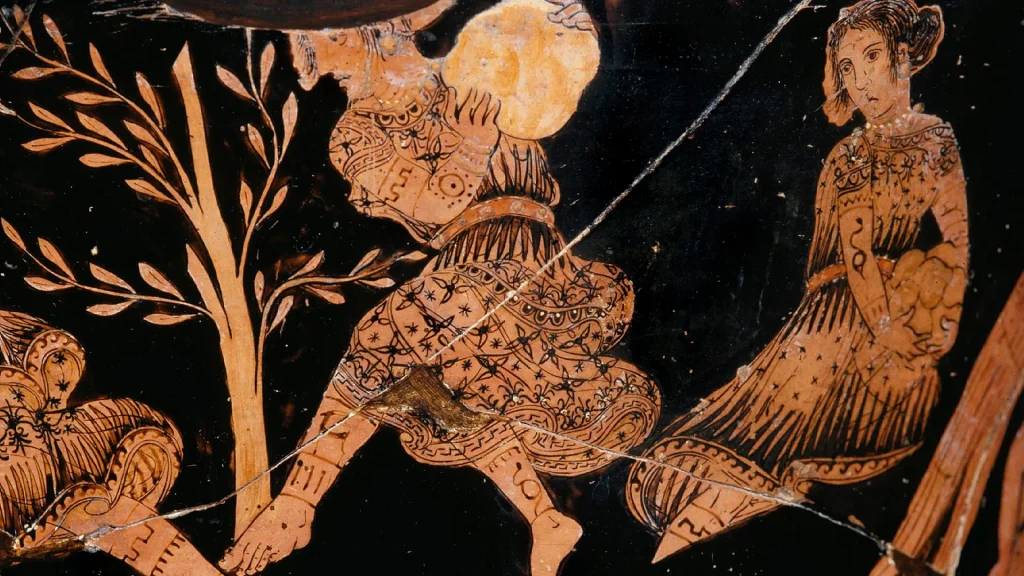Picture a world of cobblestone streets, towering cathedrals, and vibrant markets buzzing with merchants from distant lands. The medieval period, roughly spanning the 5th to the late 15th century, was a time when cities were more than just places to live—they were the beating hearts of culture, trade, and power. While many of us imagine the Middle Ages as a rural era of knights and castles, urban centers were thriving, some housing hundreds of thousands of people. In this post, we’ll journey through the largest and most influential cities of the medieval world, from the glittering Constantinople to the scholarly Cordoba.
Constantinople: The Crossroads of Empires
Let’s start with Constantinople, the city that was practically the capital of the medieval world. Founded in 330 AD by Emperor Constantine as the new capital of the Roman Empire, it became the heart of the Byzantine Empire. Straddling the Bosporus strait, Constantinople was perfectly positioned to control trade routes between Europe and Asia. By the medieval period, it was a megacity, with estimates suggesting up to a million people lived there at its peak. That’s huge for a time when most towns had just a few thousand residents!
The city was a melting pot of cultures—Greeks, Romans, Persians, and traders from as far as China mingled in its markets. The Hagia Sophia, a massive cathedral with a dome that seemed to defy gravity, was the city’s crown jewel. Constantinople’s walls were legendary, keeping invaders at bay for centuries. It was a hub of politics, religion, and commerce, with a sophisticated infrastructure that included aqueducts and a bustling port. Even after the Western Roman Empire fell, Constantinople stood strong, shaping the medieval world until it was conquered by the Ottomans in 1453, becoming modern-day Istanbul.
Baghdad: The Jewel of the Islamic Golden Age
Next, we travel to Baghdad, the cultural and intellectual powerhouse of the Middle East. Founded in 762 AD as the capital of the Abbasid Caliphate, Baghdad quickly grew into one of the world’s largest cities, with a population possibly exceeding a million by the 9th century. Its circular design, with the caliph’s palace at the center, was a marvel of urban planning. Canals connected the city to the Tigris River, making it a trade hub linking Europe, Africa, and Asia.
Baghdad was home to the House of Wisdom, a grand library and research center where scholars translated Greek, Persian, and Indian texts into Arabic. This was the heart of the Islamic Golden Age, where advancements in mathematics, astronomy, and medicine flourished. Imagine walking through bustling souks filled with spices, silks, and books, while philosophers debated nearby. Sadly, Baghdad’s golden era waned after invasions, notably the Mongol sack of 1258, but its legacy as a center of learning endures.
Cordoba: The Shining Star of Al-Andalus
In what is now southern Spain, Cordoba was a beacon of culture under Muslim rule. By the 10th century, it was arguably the largest city in Europe, with a population estimated at 400,000 to 500,000. As the capital of Al-Andalus, Cordoba was a center of scholarship, art, and tolerance, where Muslims, Christians, and Jews lived and worked together. Its Great Mosque, with its hypnotic red-and-white arches, still stands as a testament to the city’s grandeur.
Cordoba’s library was said to house hundreds of thousands of manuscripts, dwarfing the collections of Christian Europe at the time. The city’s scholars made breakthroughs in algebra, optics, and medicine, while its streets were paved and lit at night—a rarity in medieval Europe. Markets overflowed with goods from across the Mediterranean, and the city’s leatherwork and textiles were prized far and wide. Though Cordoba declined after Christian conquests in the 13th century, its influence on European culture lingered.
Paris: The Rising Star of Medieval Europe
Paris might be the city of love today, but in the Middle Ages, it was a gritty, growing metropolis. By the 14th century, it had a population of around 220,000 to 270,000, making it one of Europe’s largest cities. The Capetian kings, starting in the 10th century, chose Paris as their base, transforming it from a modest town into a political, religious, and educational hub.
The Île de la Cité, an island in the Seine River, was home to the royal palace and the stunning Notre Dame Cathedral, begun in 1163. Paris also boasted the University of Paris, a magnet for scholars across Europe, where figures like Thomas Aquinas shaped medieval thought. The city’s markets and guilds thrived, but life wasn’t all rosy—narrow, muddy streets and frequent disease outbreaks were part of daily life. Still, Paris’s rise in the Middle Ages laid the foundation for its modern prominence.
Venice: The Maritime Marvel
Venice was unlike any other medieval city. Built on a lagoon in the Adriatic Sea, its canals and islands made it a natural fortress and a trade superpower. By the 13th century, Venice had a population of around 100,000 and was the greatest maritime power of the era, with a fleet of over 3,000 ships. Its merchants traded spices, silks, and grain across the Mediterranean, connecting Europe with the Byzantine and Islamic worlds.
The city’s wealth funded architectural gems like St. Mark’s Basilica, with its shimmering mosaics. Venice was a republic, governed by a doge and a council, which gave it unusual stability for the time. Its shipyards, known as the Arsenal, were a marvel of early industry, churning out vessels at an astonishing pace. Venice’s unique geography and entrepreneurial spirit made it a global player, though its small size kept its population lower than giants like Constantinople.
Cairo: The City of a Thousand Minarets
Cairo, founded in 969 AD by the Fatimid dynasty, was a powerhouse of the Islamic world. By the 12th century, it had grown into one of the largest cities, with a population possibly reaching 250,000. Known as “The City of a Thousand Minarets,” Cairo was filled with mosques that doubled as schools, hospitals, and community centers. Al-Azhar University, established in the 10th century, remains one of the oldest universities in the world.
Strategically located near the Nile, Cairo was a trade hub connecting Europe, Africa, and Asia. Its markets buzzed with goods like spices, gold, and cotton, while its rulers, including the Mamluks, fortified the city against Crusader invasions. Cairo’s blend of commerce, culture, and religion made it a vibrant urban center, and its influence as an Islamic intellectual hub continues today.
Angkor: The Temple City of the Khmer Empire
In Southeast Asia, Angkor was a marvel of the medieval world. The capital of the Khmer Empire in present-day Cambodia, Angkor peaked between the 9th and 15th centuries, with a population possibly as high as 900,000. Covering at least 1,000 square kilometers, it was one of the largest urban complexes of its time, with vast temples like Angkor Wat at its heart.
Angkor’s sophisticated irrigation system supported massive rice production, feeding its population and fueling trade. Canals and reservoirs managed monsoon floods, showcasing advanced engineering. The city was a religious center, with temples dedicated to Hindu and Buddhist deities, reflecting the god-king rulers’ divine status. Though abandoned in the 1400s, Angkor’s ruins remain a testament to its medieval greatness.
Kaifeng: The Commercial Capital of China
In China, Kaifeng was a medieval giant. During the Song Dynasty (960–1279), it served as a political and commercial capital, with a population likely exceeding 400,000. Surrounded by three rings of walls, Kaifeng was a fortress city along the Yellow River, connected to trade routes across Asia. Its markets were legendary, offering silk, tea, and porcelain to merchants from afar.
Kaifeng’s urban planning included wide streets and a canal system for transport. The city was a cultural hub, with poets, artists, and scholars flocking to its teahouses and academies. Innovations like movable type printing emerged nearby, spreading knowledge across China. Though floods and invasions diminished Kaifeng’s status, its role in medieval China’s prosperity was unmatched.
What Made These Cities Thrive?
So, what did these urban giants have in common? Location was key—most were near rivers, seas, or trade routes, making them magnets for commerce. Strong governance, whether by kings, caliphs, or councils, provided stability. Religion played a huge role, with cathedrals, mosques, and temples anchoring community life. And let’s not forget innovation—advances in agriculture, engineering, and scholarship fueled growth. These cities weren’t just big; they were dynamic, drawing people from all walks of life to trade, learn, and worship.
But life in these cities wasn’t always glamorous. Disease, like the Black Death, hit urban centers hard. Narrow streets could be filthy, and fires were a constant threat, especially in wooden cities like London. Still, the pull of opportunity—jobs, education, and adventure—kept people coming.
Conclusion
The largest urban centers of the medieval world were more than just population hubs; they were engines of progress that shaped history. From Constantinople’s trade dominance to Cordoba’s scholarly brilliance, these cities laid the groundwork for the modern urban landscape. Their stories remind us that even in a time of castles and knights, cities were where ideas, cultures, and ambitions collided. Today, many of these places—Paris, Cairo, Venice—remain global icons, while others, like Angkor, captivate us with their ruins. The medieval city was a world unto itself, and its legacy lives on in every bustling metropolis we see today.










































